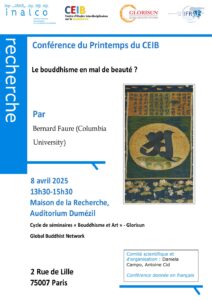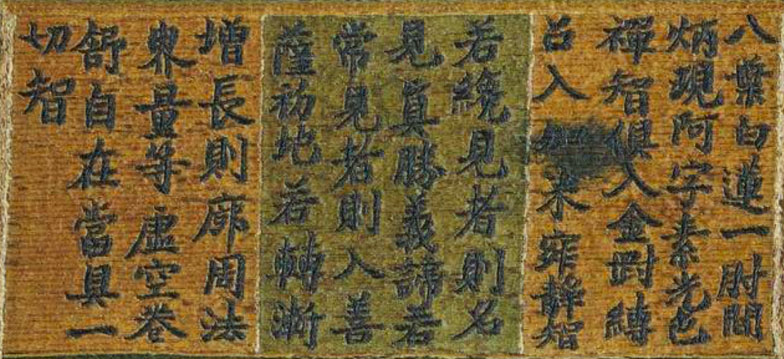Detail of “Sanskrit Seed-Syllable A”, 14th century. Hair and silk thread embroidery on plain weave silk, Shōchi-in, Wakayama Prefecture, Height: 69.5 cm, Width: 32.7 cm. Source: Ito no mihotoke, Nara National Museum (Nara: Nara National Museum, 2018, 190).
Speaker: Bernard Faure (Columbia University)
Date and time: Tuesday, April 8, 2025, 1:30 PM-3:30 PM (Paris)
Location: Maison de la Recherche (INALCO, Auditorium Dumézil)
Abstract: Le bouddhisme en mal de beauté ?
Lorsqu’on parle de l’art bouddhique, on pense d’ordinaire aux représentations de bouddhas et de bodhisattvas au visage serein ou à l’esthétique minimaliste du Zen. Je voudrais me tourner vers ce que Baudelaire appelait, dans un contexte bien différent il est vrai, la « beauté du mal ». C’est surtout dans le bouddhisme tantrique, et sa version japonaise connue sous le nom de mikkyō 密教, que l’on a essayé de rendre compte de la non-dualité entre bien et mal en représentant les divinités bouddhiques sous des traits féroces ou inquiétants. J’illustrerai mon propos au moyen de deux exemples qui me semblent particulièrement représentatifs.

Bionote: Bernard Faure’s research treats various aspects of East Asian Buddhism, with an emphasis on Chan/Zen and Tantric or esoteric Buddhism. His work, influenced by anthropological history and cultural theory, has focused on topics such as the construction of orthodoxy and heterodoxy, the Buddhist cult of relics, iconography, sexuality and gender. His current research deals with the mythico-ritual system of esoteric Buddhism and its relationships with medieval Japanese religion. He has published a number of books in French and English, and is presently working on a book on Japanese Gods and Demons.
Download the original lecture poster here.


